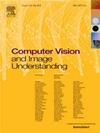基于注意力的知识蒸馏在通道和类维度上的扩展
IF 4.3
3区 计算机科学
Q2 COMPUTER SCIENCE, ARTIFICIAL INTELLIGENCE
引用次数: 0
摘要
随着知识蒸馏技术的发展,它已经分为三种不同的方法:基于逻辑的、基于特征的和基于注意力的知识蒸馏。虽然基于注意力的知识蒸馏的原理更直观,但其性能落后于其他两种方法。为了解决这个问题,我们系统地分析了传统的基于注意力的方法的优点和局限性。为了优化这些局限性,探索更有效的注意力信息,我们在渠道和类别维度上扩展了基于注意力的知识蒸馏,提出了基于空间注意力的知识蒸馏和基于渠道注意力的知识蒸馏(sak - channel)和基于空间注意力的知识蒸馏和基于类别注意力的知识蒸馏(sak - class)。在CIFAR-100上,以ResNet8×4为学生模型,与传统蒸馏方法相比,sak - channel将Top-1验证精度提高了1.98%,sak - class将Top-1验证精度提高了3.35%。在ImageNet上,使用ResNet18,这两种方法比传统方法分别提高了0.55%和0.17%的Top-1验证精度。我们还进行了大量的实验,探讨了渠道和类别维度知识蒸馏的工作机制和应用条件,为基于注意的知识转移提供了新的理论见解。本文章由计算机程序翻译,如有差异,请以英文原文为准。
Extensions in channel and class dimensions for attention-based knowledge distillation
As knowledge distillation technology evolves, it has bifurcated into three distinct methodologies: logic-based, feature-based, and attention-based knowledge distillation. Although the principle of attention-based knowledge distillation is more intuitive, its performance lags behind the other two methods. To address this, we systematically analyze the advantages and limitations of traditional attention-based methods. In order to optimize these limitations and explore more effective attention information, we expand attention-based knowledge distillation in the channel and class dimensions, proposing Spatial Attention-based Knowledge Distillation with Channel Attention (SAKD-Channel) and Spatial Attention-based Knowledge Distillation with Class Attention (SAKD-Class). On CIFAR-100, with ResNet84 as the student model, SAKD-Channel improves Top-1 validation accuracy by 1.98%, and SAKD-Class improves it by 3.35% compared to traditional distillation methods. On ImageNet, using ResNet18, these two methods improve Top-1 validation accuracy by 0.55% and 0.17%, respectively, over traditional methods. We also conduct extensive experiments to investigate the working mechanisms and application conditions of channel and class dimensions knowledge distillation, providing new theoretical insights for attention-based knowledge transfer.
求助全文
通过发布文献求助,成功后即可免费获取论文全文。
去求助
来源期刊

Computer Vision and Image Understanding
工程技术-工程:电子与电气
CiteScore
7.80
自引率
4.40%
发文量
112
审稿时长
79 days
期刊介绍:
The central focus of this journal is the computer analysis of pictorial information. Computer Vision and Image Understanding publishes papers covering all aspects of image analysis from the low-level, iconic processes of early vision to the high-level, symbolic processes of recognition and interpretation. A wide range of topics in the image understanding area is covered, including papers offering insights that differ from predominant views.
Research Areas Include:
• Theory
• Early vision
• Data structures and representations
• Shape
• Range
• Motion
• Matching and recognition
• Architecture and languages
• Vision systems
 求助内容:
求助内容: 应助结果提醒方式:
应助结果提醒方式:


